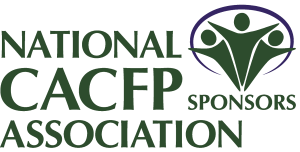Feeding Infants in CACFP
January 17, 2017

Summary
Infant feeding patterns have seen significant changes in the last several decades. The revised meal pattern requirements that go into effect this Fall acknowledge the most recent and relevant nutrition science as well as the recommendations of the American Academy of Pediatrics (AAP). This memo explains the new policies concerning creditable infant formula, breastfeeding (both expressed and on-site), and complimentary (solid) food introduction. Please be reminded that infant feeding is not required to be on an established schedule. Additionally, any infant in the care of a center or home operating the CACFP are considered enrolled and subject to this revised meal patterns.
Why It Matters
Infant feeding is both complex and some of the most vital work we do as facilitators of the CACFP. The revised meal patterns reflect the very best and most recent nutrition research we are able to provide for the youngest and most vulnerable in our care. Many of these regulations are reimbursable before the implementation date. We encourage you to adopt them as soon as you are able for the smoothest transition, to correct any errors you may find along the way, and to continue to provide the very best start to a lifetime of healthy eating habits.
Creditable Infant Formula
- All center or home formula must include iron-fortification, which is defined as containing “1 or more milligram of iron in a quantity of product that supplies 100 kilocalories when prepared in accordance with label directions for infant consumption.”
- No list will exist for approved formulas.
- Instead, use this criteria:
Ensure the formula is not FDA-exempt. - Look for “Infant Formula with Iron” on the label. It must be included.
- Use the Nutrition Facts label to verify the formula has 1 or more milligrams of iron.
- Infant formulas not regulated by the FDA are not reimbursable.
- Exempt infant formulas accompanied by a medical statement signed by a licensed physician or a State recognized medical authority are allowed for disabled infants.
- Instead, use this criteria:
Parent or Guardian provided Formula or Breastmilk
- A parent or guardian may decline the infant formula provided at the center or home.
- Creditable infant formula or expressed breastmilk provided by the parent or guardian is reimbursable.
- Breastfeeding an infant on-site is also reimbursable.
- State Agencies can make breastfeeding on-site reimbursable before the full implementation date of the revised meal patterns.
- No documentation is required for an amount a mother breastfeeds her infant on-site.
- Once the infant begins consuming solid foods, the center or home must provide the necessary components (outlined below) for the meal to be reimbursable.
Expressed Breastmilk Storage
- Expressed breastmilk may be stored for up to 72 hours in a refrigerator at 40F (4.4C). This has changed from the previous 48 hour standard.
Solid Foods (Complementary Foods).
- The revised meal patterns have two infant age groups:
- Birth through 5 months.
- 6 months to 11 months.
- Introduction of solid foods have been given increased flexibility and should be given around 6 months, but ideally at 6 to 8 months.
- Around 7 to 8 months, infants should be consuming solid foods from all major food categories.
As a best practice, centers and homes should obtain in writing from a parent or guardian when an infant is developmentally ready to be introduced to solid foods. - The following guidelines should be observed when speaking with parents about solid food introduction:
- The infant has good head control in a high chair.
- The infant opens his or her mouth when food is within sight or when others are fed. Other signs may be observed such as reaching for food and enthusiasm during mealtimes.
- The infant can move food from a spoon to his or her throat.
- The infant has doubled his or her weight and weighs 13 pounds or more.
Solid Food Components for Infants-Revisions
Vegetables and Fruits
- Infants are already required at breakfast, lunch, and supper meals for those developmentally ready (around 6 months).
- Additionally, fruits and vegetables must be served as a snack to developmentally ready infants.
- Juice is no longer creditable for infants.
Grains
- Ready-to-eat cereals may be served as a snack to developmentally ready infants.
- Align with cereal requirements for children and adults meaning no more than 6 grams of sugar per dry ounce.
Meat and Meat Alternatives
- Yogurt is reimbursable for older infants as a meat alternative.
- Must contain no more than 23 grams of sugar per 6 ounces.
- Cheese food or cheese spread is no longer reimbursable as meat alternatives.
- Whole eggs (not just egg yolks) are reimbursable as a meat alternative.
DHA Enriched Infant Foods
- Reimbursable in single-component infant foods as long as they meet all other crediting requirements.
For more information, check out Feeding Infants and Meal Pattern Requirements in the Child and Adult Care Food Program; Questions and Answers (CACFP 06-2017).
